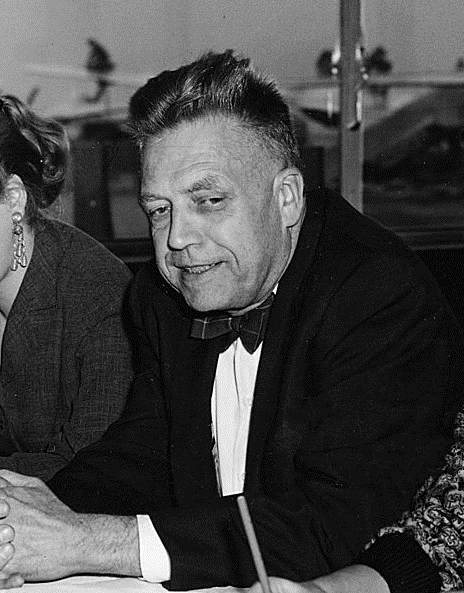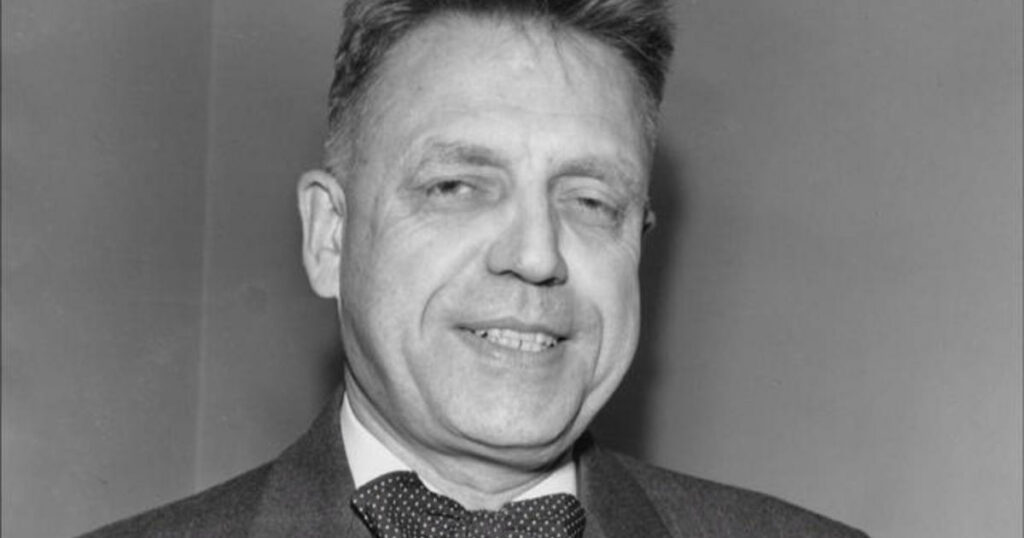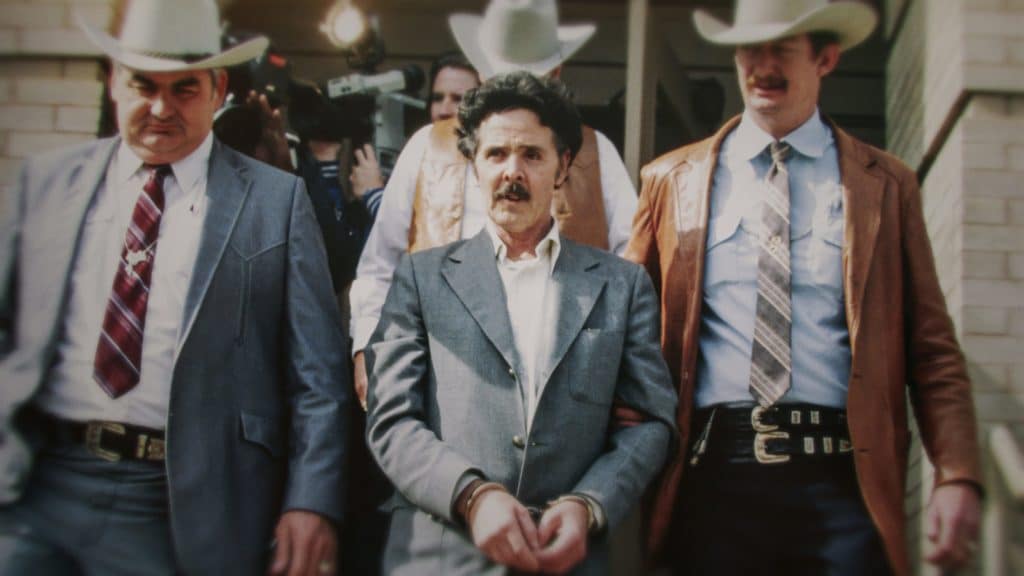In a very true sense, it all began with bugs. Gall wasps, to be specific. Building on his childhood fascination with insects, Alfred Kinsey chose the mating habits of the gall wasp as the subject of his Doctor of Science dissertation after completing his Bachelor’s degrees in biology and psychology.
But it wasn’t his findings regarding the sexual habits of this unextraordinary tree-dwelling insect that put him on the cover of Time. Instead, it was his shocking revelations regarding human sexual habits. Habits hitherto never openly discussed in polite society.

A Matter of Academics
Upon entering Harvard’s graduate school of biology in the fall of 1916, the 22-year-old Kinsey focused his research on documenting the social and reproductive habits of the gull wasp for his doctoral thesis, a species of an insect where males are scarce.
Eventually amassing several hundred thousand specimens, Kinsey accomplished more than just compiling a world-class collection of hymenoptera by the time of its completion. Instead, Kinsey had successfully designed one of science’s most revolutionary data-analyzing methods.
But little could he have imagined that this method would be the key to the project that would make him one of the foremost experts in human sexuality in the world.
Completing his ScD from Harvard in 1919, Kinsey relocated to Bloomington, Indiana, where he was made assistant professor of entomology at Indiana University, ranked among the most important entomologists in academia.
In the fall of that year, the socially awkward Kinsey met chemistry major Clara Bracken McMillan, who shared his love of the natural world; and bugs.
Though both were exceptionally inexperienced at dating (and sexual matters), they managed to cultivate a personal relationship that led to marriage in June 1921.
Ironically, their attempts to consummate their marriage on their wedding night led Kinsey to devote the next portion of his life to studying human sexual behavior.
Sexual Mores of the Early 20th Century
Alfred and Clara’s sexual naivete became an immediate obstacle–presenting insurmountable problems on their very first night together. Though they repeatedly attempted intercourse, their lack of basic sexual knowledge prevented it. Not their ignorance of the mechanics of sexual intercourse—which any scientist would be well versed in, but their ignorance of human sexual anatomy. They knew what to do—it just didn’t work.
As trained researchers, the newlyweds consulted what literature was available on sex, which they quickly discovered was limited to basic marriage manuals (No actual academic textbooks on the subject existed).
But marriage manuals of the time didn’t address intercourse directly; they typically promoted abstinence except for procreation—with a few pages dedicated to personal hygiene, wedding night expectations, and sometimes petting.
The first significant book to break out of this conservative mold was Happiness in Marriage, written in 1926 by Planned Parenthood founder Margaret Sanger, in which not only are sex and marital issues discussed, but pregnancy and birth control are also covered.
If the answers they sought could have been found on the written page, they would likely have discovered that Clara suffered from a relatively common abnormality of her sex organs, correctable with a simple surgery.
During what became the couple’s yearlong quest for sexual fulfillment, several life-defining revelations came about for the Kinseys. For one, Alfred’s deep-seated childhood anxieties about sex surfaced—as did a growing preoccupation with the deplorable lack of available information regarding sex.
For another, the extensive amount of practical information Clara had gleaned about sex through numerous doctor consultations had made her the “go-to” sex therapist for many of her female friends–on and off campus.
Quite unwittingly, the knowledge Alfred and Clara had accumulated exceeded anything commonly known at that time. Additionally, the couple had unintentionally acquired a veritable catalog of anecdotal case histories from friends and colleagues that added to their growing body of sexual knowledge.
By Kinsey’s own account, this constant attention to sex resulted in the two becoming increasingly more sexually adventurous, developing an “open” marriage.
The Formal Study of Human Sexuality
Over the next few years, Kinsey’s academic and personal interests took a fundamental turn from bug life to human sexuality.
Insiders credit Clara with having the foresight to urge Alfred to formalize his years of entomological findings (despite having four children between 1922 and 1928) or his pain-staking work would likely have been lost to posterity.
Due to her diligence, Kinsey published two major works during this time: The Gall Wasp Genus Cynips: A Study in the Origins of the Species (in which he identifies 48 never-before-identified species) in 1930 and The Origin of Higher Categories in Cynips published in 1936. Both remain the premier sources for gull wasp authority.
In 1938, prompted by a nationwide spike in syphilis and gonorrhea cases, Indiana University offered a sex education course to seniors and married students, assigning Kinsey as the instructor.
Shocked that the scientific literature of the time was filled with superstition and archaic information based on Judeo-Christian ethics rather than hard science, Kinsey opted to present his own informed perspectives about sex and the spread of disease to his students.
And though the class was always at full capacity, once the University Advisory Board discovered that he was openly advocating atheism and contraception (in direct opposition to Christian beliefs) and presenting sexually-graphic illustrations in class, he was replaced as the instructor.
Through his student interaction, Kinsey became convinced that the only true way to affect human sexual behavior was to provide frank, unadulterated information to the public. And the best way to provide that was first to conduct scientifically-administered interviews to find out what America’s sexual habits were.
Kinsey’s Team of Experts
In 1940, Kinsey managed to secure a grant from the Rockefeller Foundation to pursue his research into human sexual behavior further, subsequently founding The Institution for Sex Research at Indiana University in 1942.
By this time, he’d enlisted several professionals to help conduct interviews and analyze findings, including University undergrad and one-time interviewee Clyde Martin, former prison psychologist Wardell Pomeroy, zoologist Ralph Voris, anthropologist Paul Gebhard, and his ever-devoted wife, Clara.

Kinsey trained his team in proper scientific interviewing methods, data interpretation and analysis, and how to graph and chart statistical data (based on the methodology he’d designed for his gull wasp research).
To reach the broadest cross-section of subjects, Kinsey took his team on the road, traveling city to city, ultimately conducting tens of thousands of interviews—and asking questions never before asked about people’s sexual habits. And though he didn’t know it at the time, by 1945, he was well on his way to changing the face of sexuality in America forever.
Kinsey’s Hands-On Involvement
By all accounts, Kinsey’s research was by no means limited to the clinical setting alone. He was known to encourage sexual interaction between members of his staff and their wives, typically hiring videographers to film them masturbating and/or engaging in other sex acts.
Not only did he allow an affair between Clara and Clyde Martin, he encouraged a sexual tryst between Paul Gebhard and Martin’s wife, Alice.
Kinsey frequently hosted dinner parties where alcohol and drugs were readily available, Kinsey himself the primary sexual aggressor, often engaging in sex with multiple partners (including men) in a single evening.
In addition to having homosexual relationships with Voris, Martin, and Pomeroy, Kinsey often took his team to seedy Chicago nightclubs where he participated in homosexual acts with any number of subjects. Furthermore, he mail-ordered so much sexually-explicit material from Europe that U.S. Customs launched a formal investigation.
Sexual Behavior in the Human Male and Female
By 1947, Kinsey had amassed enough anecdotal data through questionnaires and interviews to support a book about male sexuality, publishing Sexual Behavior in the Human Male in 1948.
Despite (or perhaps because of) the shocking conclusions it presented: that homosexual acts were far more common among men than previously believed, that the average man reaches the peak of virility at about the age of 16 or 17—after which it quickly declines, and that men who began sexual activity early held their sexual virility longer, it became a best-seller overnight, largely due to Kinsey’s academic standing.
Encouraged by his book’s unprecedented success (and the sexual celebrity it afforded him), Kinsey and his staff began assembling the sequel: Sexual Behavior in the Human Female.
Covering the same basic topics as his male-focused book: premarital and extramarital relations, masturbation, sex dreams, and sexual preferences, his second book was ready for publication by 1953.
In September of that year, amid media hype and public expectation, the new book hit the shelves–but didn’t receive nearly the reception expected. Despite scoring the covers of Time, Post, and Collier’s magazines, the response to the book was lukewarm and scornful at worst.
Kinsey intended to inform the public that women were no less preoccupied with sex than men; that they did not consider lesbianism a perversion, they believed they had as much right to seek sexual satisfaction as men, believed a satisfying sex life for both partners is crucial to a happy marriage, and that women who’d engaged in premarital sex were more likely to have sexually-fulfilled lives than those who didn’t.
But the public didn’t want to know that. While American society was perfectly willing to accept that men had depraved sexual tendencies, it didn’t want to accept that women–mothers, daughters, grandmothers, sweethearts, and wives—were attracted to sexual activities most decent, mainstream Americans considered perverted and only of interest to prostitutes.
Kinsey quickly realized that American sensibilities had somehow shifted in the five years it had taken to compile the book.
Having thus far considered himself attuned to the sexual propensities of mainstream America, he was both personally and professionally staggered to find that he was wrong.
Backlash and Beginning of the End
While Kinsey may have been able to recover from the negative reception his female-focused book received, he wasn’t prepared for the additional backlash to follow.
Shortly after the second book was released, the U.S. House of Representatives launched a formal investigation into Kinsey and his Institute, attempting to connect him to the American Communist Party.
Government sources openly implied that Kinsey’s true agenda was not to educate the American public about people’s sexual habits but subvert it as an agent of the Communists by demeaning American women.
This overt, frontal attack resulted in Kinsey’s financial and academic supporters distancing themselves. Kinsey attempted to solicit funding from other sources over the next few years, but his reputation had been too badly damaged.
His true-blue, All-American scholastic veneer had been cracked and what many Americans saw was something dark and shameful. The man many called “Dr. Sex” quickly slipped into oblivion.
Requiem for an Academic
Two years later, in 1956, after a series of ailments, Alfred Kinsey died from complications from congestive heart failure at the age of 62.
After his death, Paul Gebhard, Kinsey’s closest friend and colleague, became Director and Chief Administrator of the Kinsey Institute, remaining in this post until 1982, when he retired. Kinsey’s wife Clara lived in relative quietude until she died in 1982 at the age of 84, contributing to her husband’s legacy in her final years.
Despite all the negative publicity of the time, The Kinsey Institute for Research in Sex, Gender, and Reproduction is today regarded as one of the premier sex research institutes in the world and continues to explore ground-breaking sexually-related issues–as Kinsey intended.
Moreover, his phenomenal contribution to the study of human sexuality has inspired a number of other sexuality studies in subsequent years, including the work of William Masters and Virginia Johnson (Master and Johnson Institute, founded in 1978) and Shere Hite (of The Hite Report: A Nationwide Study of Female Sexuality, published in 1976).
(Note: No connection to Communism was ever proved and is now assumed by many to have been a ploy to discredit Kinsey’s work and findings.)

